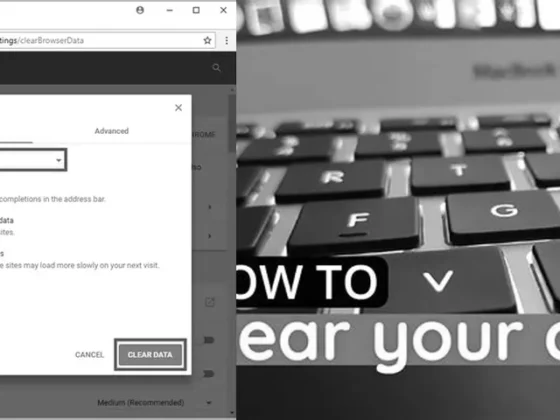What Do the Side Buttons on a Cell Phone Actually Do? – Unlocking the Mystery: What Are The Buttons For On The Side Of A Cell Phone?
Have you ever found yourself staring at the side of your cell phone, wondering what those mysterious buttons are for? Don’t worry, you’re not alone! In this tech-savvy world, it’s easy to get overwhelmed by the multitude of features our smartphones offer. But fear not, dear reader, for I am here to unravel the enigma of those side keys and unlock their true potential.
From volume control to camera shortcuts, these unassuming buttons hold the key to a world of convenience and efficiency. In this blog post, we will delve into the functionality of side keys on cell phones, exploring how they can enhance your daily smartphone experience. So, sit back, relax, and prepare to discover the hidden treasures lurking on the side of your beloved device.
But before we embark on this enlightening journey, let me share a little secret with you. Did you know that these side keys have a fascinating history? They have evolved over the years, adapting to the ever-changing needs of smartphone users. So, get ready to dive into the past, present, and future of side keys, as we explore their evolution and the exciting possibilities that lie ahead.
So, whether you’re a tech enthusiast looking to squeeze every drop of functionality out of your phone or a curious individual seeking answers, this blog post is your ultimate guide to understanding and maximizing the potential of those buttons on the side of your cell phone. Get ready to take your smartphone experience to a whole new level!
Let’s get started, shall we?
Understanding the Functionality of Side Keys on Cell Phones
Modern cell phones are marvels of design, with every element serving a purpose to enhance user experience. The side keys of a cell phone are a perfect example of this thoughtful design. These keys, positioned for easy access by the fingertips, are not merely added for symmetry but play crucial roles. In this post, we’ll explore the functions of these buttons, which, despite their simplicity, significantly impact how we interact with our devices.
The Volume Rocker: Adjusting Sounds with a Push
The volume rocker is a staple on the side of nearly every cell phone. This intuitive control is typically a two-segment button – one end to turn the volume up and the other to turn it down. The simplicity of this design belies its importance, as it allows users to quickly adjust the volume of their ringtone, media, notifications, and sometimes even the phone’s overall sound profile. Adjusting volume without these keys would mean several more steps through the phone’s settings, which is neither convenient nor efficient.
Tip: If you’re in a meeting or a quiet space and your phone suddenly rings loudly, a single press on the down segment can instantly silence it, saving you from potentially embarrassing situations.
The Lock/Power Button: More Than Just On and Off
The lock or power button is another key feature on the side of your phone, generally positioned for easy thumb or finger access. Initially designed to simply turn the phone on or off, the functionality of this button has expanded over the years. A short press will lock or wake the phone, while a long press might bring up options for power off, restart, or emergency mode on various devices.
Remember, the power button is your go-to for not just switching off your device but also for a quick way to lock it, ensuring privacy and security.
The Power/Bixby Button on Samsung Devices
On newer Samsung Galaxy phones, the side key has evolved. It retains its function as a power button but also doubles as a means to access Bixby, Samsung’s virtual assistant. This multipurpose button can be customized to perform different actions, like activating Bixby with a long press or pulling up the power off menu with a double press – flexibility that is a testament to the evolving relationship between hardware and software.
Pro Tip: Dive into your Samsung Galaxy’s settings to customize the side key actions. Tailoring this button to your preferences can streamline your phone usage and save time.
Three-Button Navigation: A Staple of Android Devices
While not directly related to side keys, the three-button navigation system is an integral part of many Android devices, including those from Samsung. This trio of virtual or physical keys facilitates navigation with the back, home, and app overview buttons. Their evolution from physical to on-screen buttons showcases the industry’s shift towards sleeker, more versatile design choices.
- Back Button: A staple for ease of navigation, allowing users to return to the previous screen or step.
- Home Button: The anchor point of your phone, press this to return to your home screen from any application.
- App Overview Button: This button reveals all open applications, enabling quick switching or closing of apps.
Maximizing the Potential of Your Phone’s Side Keys
Knowing what the buttons do is one thing, but mastering their potential is another. Let’s delve into how you can make the most of these features to enhance your smartphone experience.
Volume Key Shortcuts and Tricks
Aside from adjusting sound levels, did you know that the volume keys can often be used to execute camera actions, such as taking a photo or starting a video recording? This can be particularly useful when trying to capture a moment quickly or when using the phone with one hand.
- Some devices also allow you to use volume keys to answer calls, a handy feature when you’re wearing gloves or cooking.
- In accessibility settings, volume keys can sometimes be set up to perform specific actions, improving the device’s usability for everyone.
Lock/Power Button as a Shortcut
The lock/power button can also serve as a shortcut to certain features. For instance, on some devices, a double press can launch the camera, making it faster to go from pocket to picture.
- When your phone is locked, pressing the power button can also display notifications on the lock screen, giving you a quick glance at important updates without unlocking your device.
Customizing the Side Key on Samsung Phones
As mentioned, Samsung allows for customization of the side key. By default, it may call on Bixby, but you can change this to open any app of your choice or run a quick command. Exploring this customization can lead to a more personalized and efficient user experience.
How-To: Go to Settings > Advanced Features > Side Key and choose the actions you find most beneficial for your daily use.
Navigating Your Phone with Three-Button Controls
For users who prefer tactile feedback or simply like a more traditional approach, the three-button navigation system is invaluable. While gesture navigation is becoming more common, the reliability of these buttons remains appealing to many.
- Learning to quickly double-tap the app overview button to switch to the last used app can make multitasking a breeze.
- Third-party apps can also be installed to remap these buttons for additional functions, further extending their utility.
Integrating Side Keys into Everyday Use
Understanding and integrating the use of side keys into your daily routine can make a considerable difference in how you interact with your phone. As devices continue to evolve, so too will the capabilities of these unassuming buttons, potentially offering even more shortcuts and features.
Accessibility and Side Keys
For those with accessibility needs, side keys can be programmed to trigger specific functions that make the device easier to use. This user-centric approach demonstrates the inclusive design philosophy that modern smartphones aim to embody.
Emergency Functions
Some phones also use the power button as a means to send emergency distress signals. A rapid series of presses can trigger a call to emergency services or send a message to emergency contacts, proving that these buttons can be literal lifesavers.
The Evolution of Side Keys: Looking Ahead
As we look towards the future, the potential for side keys to offer even greater functionality is vast. With advancements in software, we may see these buttons taking on roles we haven’t yet imagined, from interacting with smart home devices to serving as triggers for augmented reality features.
The side keys on our phones are small but mighty, and as we’ve seen, they do much more than adjust volume or power on our devices. By mastering their functions and customizations, we can unlock new levels of convenience and efficiency, making our smartphones even smarter.
FAQ & Related Questions about Buttons on the Side of a Cell Phone
Q: What are the buttons for on the side of a cell phone?
A: The buttons on the side of a cell phone, known as side keys, are designed to be used by your fingertips while holding the phone. They typically consist of a volume up/down rocker and a single lock/power button.
Q: What are the buttons on the side of my phone for?
A: The volume button on the side of your phone can be pressed to adjust the phone’s volume. The side button, also known as the power/bixby button, can be used for various functions depending on the phone model.
Q: What are the three buttons on a Samsung phone for?
A: The three buttons on a Samsung phone typically refer to the back, home, and multitasking buttons. These buttons are used for navigating through the phone’s interface and performing different actions.
Q: What are the buttons on Android?
A: On Android, the three-button navigation consists of buttons for home, back, and app overview. These buttons allow users to navigate through the phone’s interface and switch between different apps.
Q: What do you call the three buttons on my phone?
A: The three buttons on your phone are commonly referred to as back, home, and overview buttons. These buttons serve different functions and are used for navigating and interacting with the phone’s interface.


